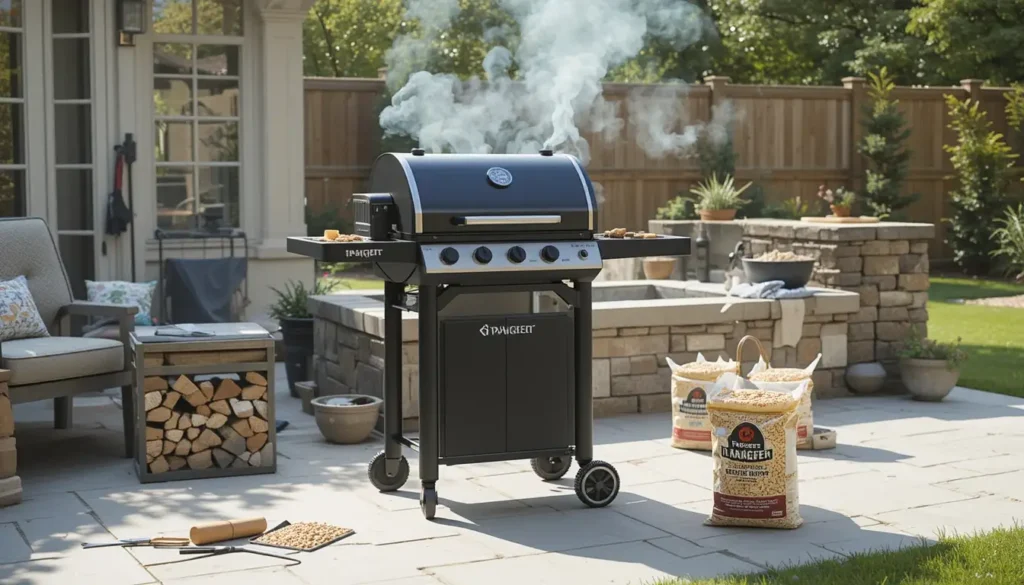Traeger grills have become a household name for grilling enthusiasts, particularly those who enjoy slow-cooked, smoky flavors. These wood pellet grills, despite their innovative design and ease of use, come with certain cons of Traeger grills that may not suit every griller’s needs. While they excel at infusing food with a distinctive, rich taste, they aren’t perfect for everyone.
While their pros often steal the spotlight, it’s just as important to consider the cons, especially for someone investing a significant amount of money in their grill. This article will take a closer look at the disadvantages of Traeger grills, helping you decide if it’s the right choice for your outdoor cooking needs. From cost and maintenance to performance challenges and cooking limitations, let’s explore the areas where Traeger grills might fall short.
Table of Contents
Cost Concerns
One of the most common drawbacks of a Traeger grill is its cost. Traeger grills are often marketed as premium cooking appliances, which is reflected in their price. However, this premium cost can be a significant barrier for budget conscious buyers.
Initial Purchase Price
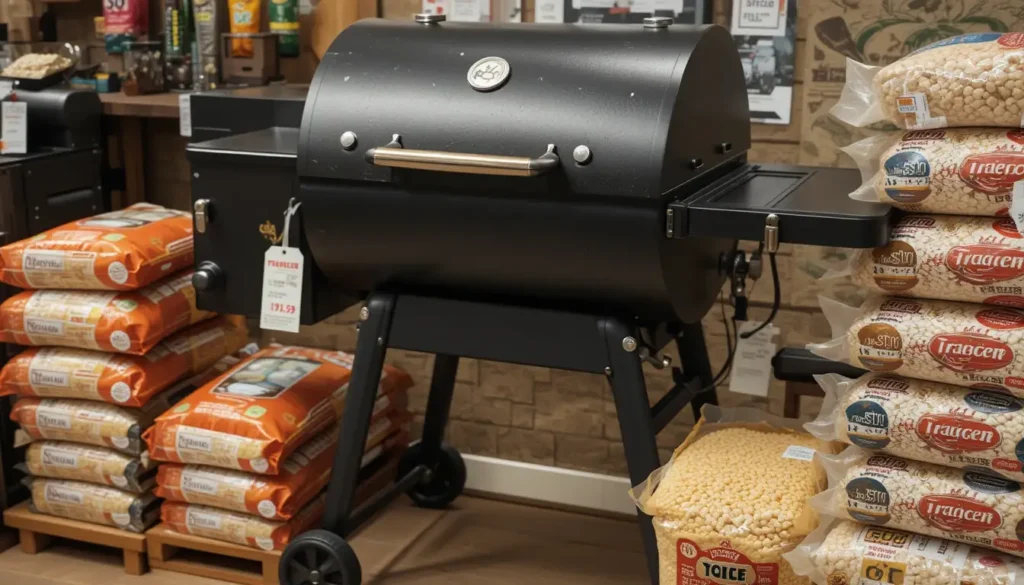
The initial cost of a Traeger grill is notably higher compared to other types of grills like gas or charcoal models. Entry-level Traeger grills typically start at around $400, while more advanced models can exceed $2,000. For casual grillers or beginners, this steep price might not seem justifiable, especially when there are more affordable options available that can achieve similar results.
Cost of Wood Pellets
Traeger grills rely exclusively on wood pellets as fuel, which adds a recurring cost. High-quality pellets can cost anywhere from $15 to $25 per 20 pound bag. Depending on how often you use the grill, this can add up quickly. In comparison, gas grills require propane or natural gas, which is often more economical in the long run, while charcoal grills use inexpensive lump charcoal or briquettes.
Comparisons to Other Grill Types
When comparing Traeger grills to traditional gas or charcoal grills, the cost difference becomes even more apparent. Gas grills in the mid range often provide similar cooking space and durability for a fraction of the price. Charcoal grills, beloved for their authentic smokey flavor, also come in at a much lower initial investment and don’t have the added expense of specialized fuel.
Are They Worth the Price?
For those who grill frequently and appreciate the convenience and flavor that wood pellet grills offer, the price might be worth it. However, for infrequent users or those who don’t prioritize smoking or slow cooking, the cost of a Traeger grill may outweigh its benefits.
Maintenance Issues
Another significant drawback of Traeger grills is the maintenance involved in keeping them in optimal working condition. While these grills are designed for ease of use, their upkeep can be more demanding than traditional gas or charcoal grills.

Cleaning Requirements
Traeger grills require regular cleaning to prevent performance issues and maintain their longevity. After each use, the grill’s grates, drip tray, and fire pot should be cleaned to remove grease, ash, and food residue. Unlike charcoal grills that allow ashes to be disposed of in one go or gas grills with minimal cleanup, the ash buildup from wood pellets adds an extra layer of responsibility for Traeger owners. Neglecting this can lead to inefficient operation or even fire hazards.
Replacement Parts Availability
Over time, certain parts of a Traeger grill, such as the igniter, auger motor, or temperature probe, may need replacement. While Traeger offers customer support and replacement parts, the availability and cost can be a challenge. If you’re in a remote area or a place where Traeger support isn’t widespread, obtaining parts quickly might prove difficult. Additionally, the cost of some components can be high, especially compared to repairs on simpler grill types.
Reliability of Electronic Parts
Most Traeger grills rely on electronic components to operate, such as the digital controller, fan, and auger system. These components can malfunction over time, especially when exposed to harsh weather conditions like rain or extreme cold. Repairing or replacing these electronic parts often requires professional service, which can add to the overall maintenance costs.
Is the Maintenance Effort Justified?
While routine cleaning and occasional repairs are standard for any grill, the effort required for a Traeger grill can be overwhelming for casual users. For those who use their grill frequently and are willing to invest in maintenance, the upkeep might be manageable. However, for others, it could detract from the overall grilling experience.
Cooking Challenges
While Traeger grills excel in certain areas like slow cooking and smoking, they do have limitations when it comes to versatility in cooking styles. These challenges can make them less appealing for individuals seeking an all purpose grill.
Limited High-Heat Cooking Options
One of the most significant cooking related drawbacks of Traeger grills is their inability to reach extremely high temperatures. Most Traeger models top out at around 450°F, while traditional gas and charcoal grills can often exceed 600°F. This makes it challenging to achieve the high heat searing required for certain recipes, such as steaks or crispy pizza crusts.
Although Traeger offers specific models with a searing option or recommends workarounds like using a cast iron skillet, these solutions may not fully replicate the results achieved on a grill designed for high heat cooking.
Slow Startup Time
Traeger grills are not as quick to start as gas grills. It typically takes 10–15 minutes for the grill to reach the desired cooking temperature. For those accustomed to the instant ignition of a gas grill, this can feel inconvenient, especially when preparing meals on a tight schedule.
Learning Curve for Beginners
Using a Traeger grill involves understanding its unique mechanisms, such as loading pellets, adjusting the digital controls, and maintaining consistent heat. While these features enhance the grilling experience for seasoned users, they can be intimidating for beginners. New users often face challenges like uneven cooking or difficulty maintaining desired temperatures until they become familiar with the grill.
Best Suited for Low-and-Slow Cooking
Traeger grills excel in low and slow cooking methods, making them ideal for smoking brisket, ribs, or pulled pork. However, their limitations in high heat cooking and speed mean they may not satisfy users who prefer versatile, fast paced grilling options.
Explore the best Traeger recipes for delicious grilling if you decide to embrace its benefits despite the cons.
Dependency on Electricity
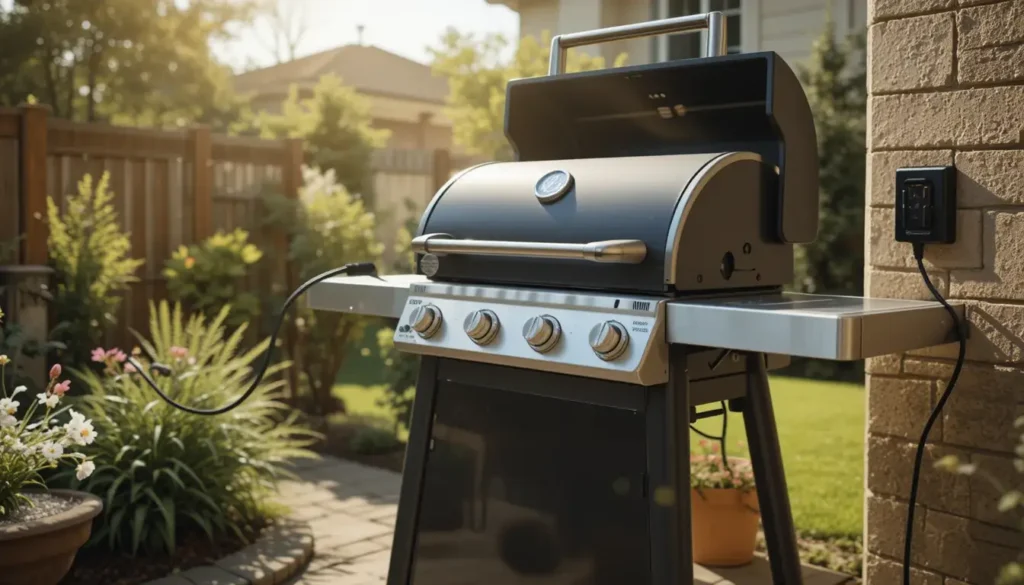
One of the defining characteristics of Traeger grills is their reliance on electricity to function. While this feature enables precise temperature control and automation, it introduces some significant drawbacks that can limit their versatility and convenience.
Requires a Constant Power Source
Unlike gas or charcoal grills, which can operate independently of an electrical connection, Traeger grills need electricity to power their digital controls, fan, and auger system. This dependence makes them less suitable for outdoor activities like camping or tailgating in locations without access to electricity. Even with a portable power source, the added effort and setup can be inconvenient.
Impacts Portability
The need for an electrical outlet also affects the portability of Traeger grills. While smaller models are available, they still require a power source, which limits their use in remote locations. In contrast, a compact charcoal grill or propane powered gas grill offers far greater flexibility for on the go grilling.
Power Outages During Grilling
Electricity dependency can become a major issue if a power outage occurs mid cooking. Without power, the grill’s auger stops feeding pellets, and the fan ceases to circulate heat and smoke, potentially ruining your food. This makes Traeger grills less reliable in situations where electricity might be unstable or unavailable.
Wood Pellet Usage
Traeger grills are designed to operate exclusively on wood pellets, which brings unique advantages in flavor and precision but also comes with its own set of limitations.
Pellet Consumption Rates
The amount of pellets consumed during grilling depends on factors such as cooking temperature, ambient weather, and the duration of use. On average, a Traeger grill burns 1–3 pounds of pellets per hour. For long cooking sessions, this can lead to high consumption rates, requiring users to stock up on pellets frequently.
Environmental Impact
While wood pellets are considered a renewable fuel source, their production and transportation still have an environmental footprint. Additionally, grills that consume pellets at high rates contribute to higher overall resource use compared to grills that burn natural gas or lump charcoal.
Dependence on Specific Pellet Brands
Traeger grills perform best when used with high-quality pellets, particularly those produced by Traeger itself. While third-party pellets may be more affordable, they can sometimes lead to uneven burning or ash buildup, potentially voiding the grill’s warranty. This dependence on brand-specific products highlights one of the key cons of Traeger grills, as it can feel limiting for users seeking more flexibility.
A Trade-Off Between Convenience and Flexibility
Although the wood pellet system and electricity enhance precision and ease of use, they also create dependencies that may not align with every user’s needs. For those prioritizing flavor and convenience at home, these trade-offs may be acceptable. However, for adventurers or budget conscious users, the limitations can outweigh the benefits.
Downsides of Traeger grills: Performance Limitations
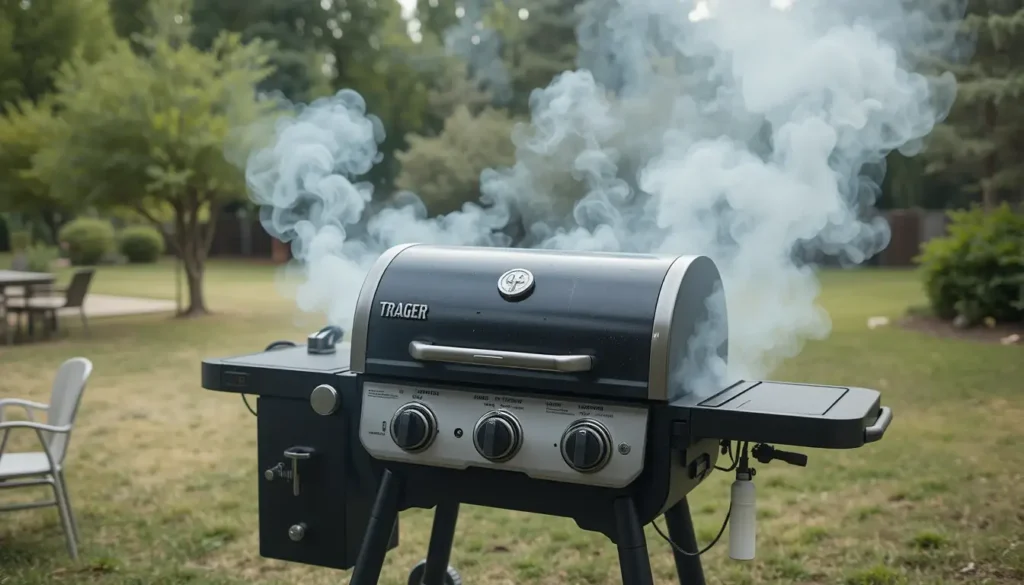
While Traeger grills are designed to deliver consistent cooking results, they can struggle in certain performance areas. These limitations may impact the overall cooking experience, particularly for users who expect flawless operation in all conditions.
Inconsistent Temperature Control
Traeger grills have digital controls to keep temperatures steady, but some users notice occasional changes, highlighting the cons of Traeger grills. Weather conditions like wind, rain, or extreme cold can cause uneven heating, which may result in unevenly cooked food. Using grill covers or other tools can help, but they also increase the overall cost and make the grill harder to use.
Struggles in Extreme Weather
Traeger grills can be sensitive to environmental conditions. In extremely cold weather, they may consume pellets more quickly as the grill works harder to maintain the set temperature. Likewise, in rainy or windy conditions, the grill’s performance may be affected. For outdoor cooking enthusiasts in variable climates, these challenges can be frustrating.
Smoke Flavor Intensity Variability
One of the main appeals of a Traeger grill is its ability to infuse food with a smoky flavor. However, some users find the smoke flavor too subtle compared to traditional charcoal or offset smokers. While this can be adjusted by selecting specific pellets or increasing the cooking time, it may not fully satisfy those who crave an intense smoky taste.
Not Ideal for All Grilling Styles
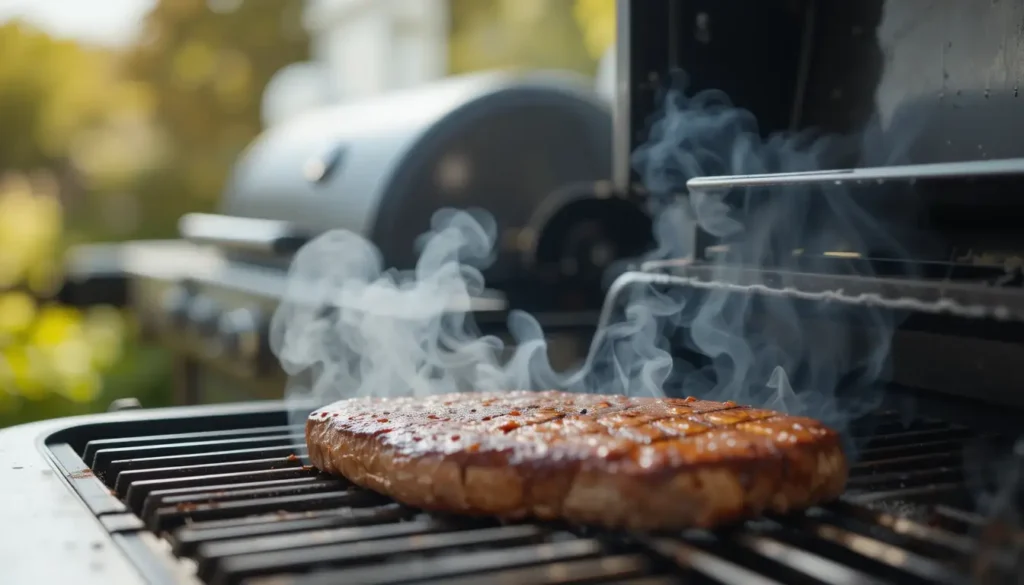
Traeger grills shine in smoking, baking, and slow cooking, but they are less versatile for other grilling styles. This limited adaptability can be a dealbreaker for users who want a single grill to handle all types of cooking.
Better for Smoking, Less for Searing
Traeger grills are optimized for low and slow cooking methods but struggle to achieve the high, direct heat needed for perfect searing, which is one of the cons of Traeger grills. While certain accessories, like cast iron grates, can help compensate, they still don’t match the efficiency of a gas or charcoal grill for achieving that ideal charred crust on steaks or vegetables.
Cons of Traeger Grills: Limited Versatility Compared to Other Grills
Gas grills, for instance, can switch between low, medium, and high heat with ease, making them suitable for a wide variety of dishes. Charcoal grills, meanwhile, provide direct and indirect heat zones for greater control over cooking methods. The cons of Traeger grills include their struggle to switch quickly between different cooking styles.
Discover whether Traeger can be used as a regular grill to adapt to different cooking needs.
Technological Dependence
Traeger grills have embraced modern technology, with many models featuring Wi-Fi connectivity for remote monitoring and control. While this innovation can be convenient, it also introduces new potential challenges.
Issues with Wi-Fi Connectivity
Smart Traeger grills rely on a stable Wi-Fi connection for app-based monitoring and control. If your Wi-Fi signal is weak or the grill’s firmware encounters issues, you may lose access to these features, highlighting one of the cons of Traeger grills. This can disrupt your cooking process, particularly for users who rely heavily on the remote control functionality.
Troubleshooting Electronic Glitches
Like any electronic device, Traeger grills can have glitches or problems, such as a frozen digital display or issues between the controller and the grill parts. Fixing these problems can take time and might need help from technical support, making ownership more complicated.
Comparisons with Other Grills: Understanding the Cons of Traeger Grills
To better understand the cons of Traeger grills, it helps to compare them with gas and charcoal grills. Gas grills heat up faster and reach higher temperatures, while charcoal grills deliver a stronger smoky flavor and a traditional grilling feel. Traeger grills, though easy to use and accurate, often fall short in these areas, making them less attractive to people with varied grilling needs.
FAQs
Are Traeger Grills Good for Beginners? Understanding the Cons of Traeger Grills
Yes, but they require some learning. While the digital controls make operation straightforward, beginners may need time to understand pellet consumption and temperature management.
Can I use other brands of pellets in a Traeger grill?
Yes, but using non Traeger pellets may void your warranty and lead to inconsistent performance. Stick to Traeger-approved brands for the best results.
How often should I clean my Traeger grill?
To maintain performance, it’s best to clean the grill after every use, focusing on the grates, fire pot, and drip tray.
What happens if my Traeger grill loses power mid cook?
If the power goes out, the grill stops working, halting the cooking process. Food inside might not cook properly, and you’ll need to restart the grill once power returns.
Do Traeger grills work effectively in extreme cold weather?
Yes, but you may need additional accessories like an insulating blanket to maintain performance and reduce pellet consumption.
Do Traeger grills require a lot of maintenance?
Traeger grills do require regular cleaning and occasional replacement of parts, especially electronic components, to stay in good working condition.
Conclusion
Traeger grills offer undeniable convenience, precision, and flavor for those who enjoy slow-cooked and smoked dishes. However, the cons of Traeger grills, including their high cost, maintenance demands, and performance limitations, may not suit everyone. Grillers who prioritize versatility, portability, or high-heat searing may find gas or charcoal grills a better fit. Understanding these cons will help potential buyers make an informed decision and determine if a Traeger grill aligns with their grilling needs and lifestyle.

